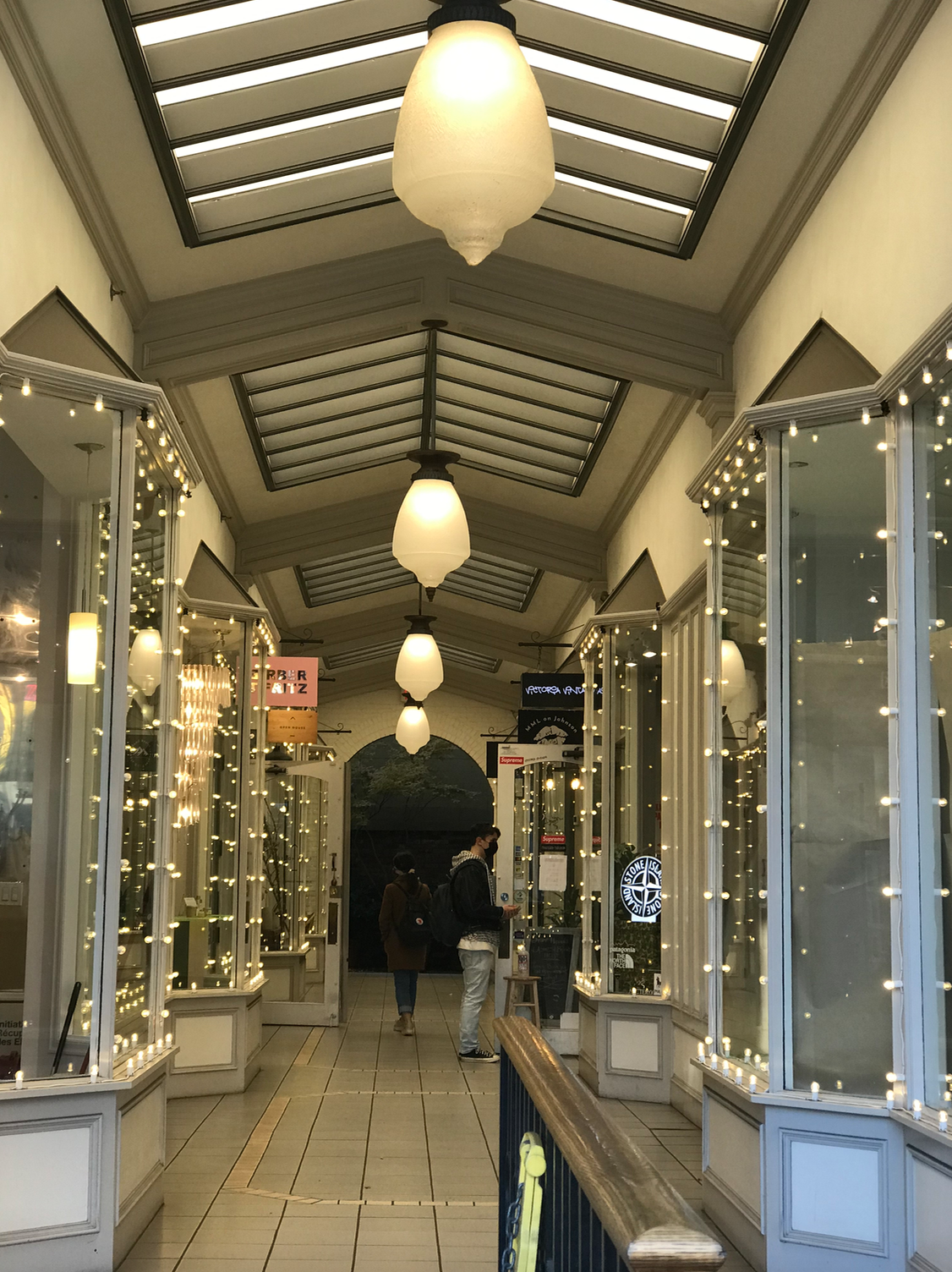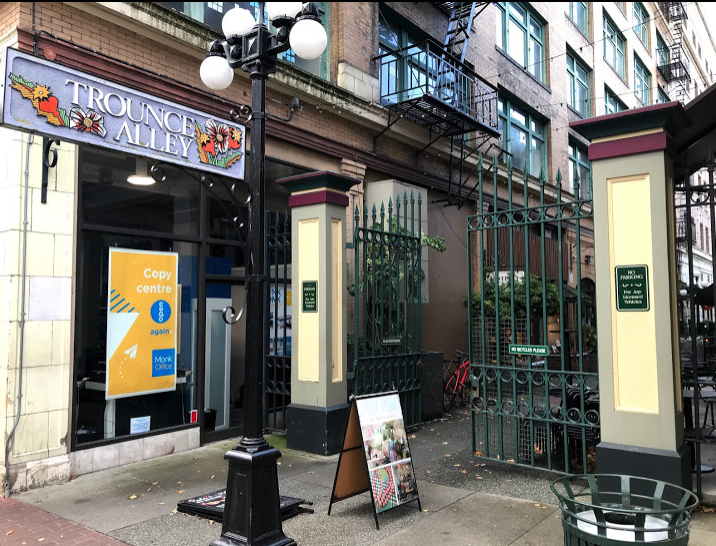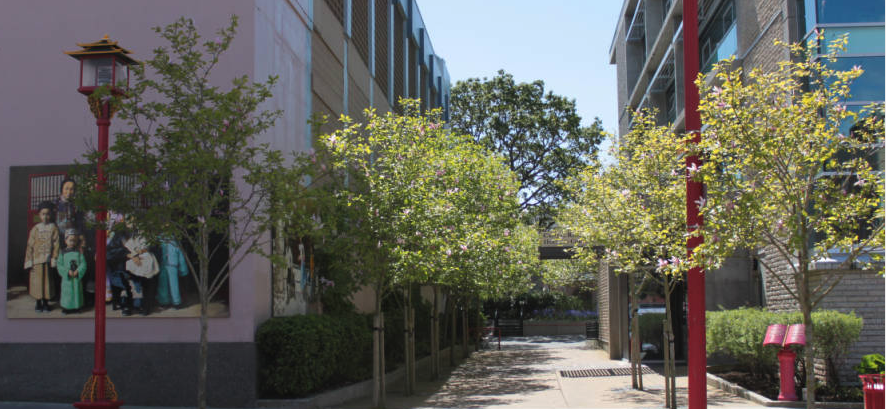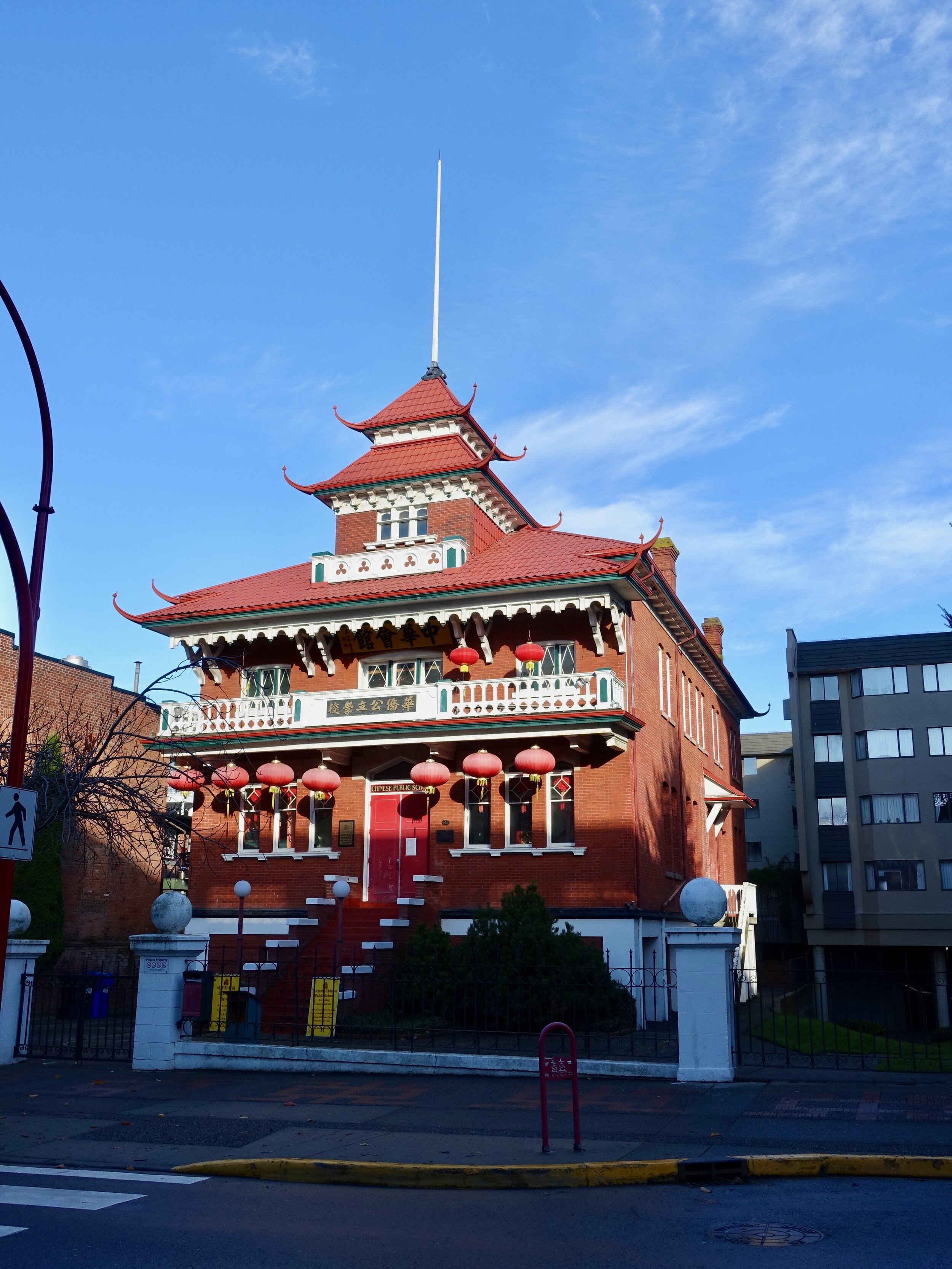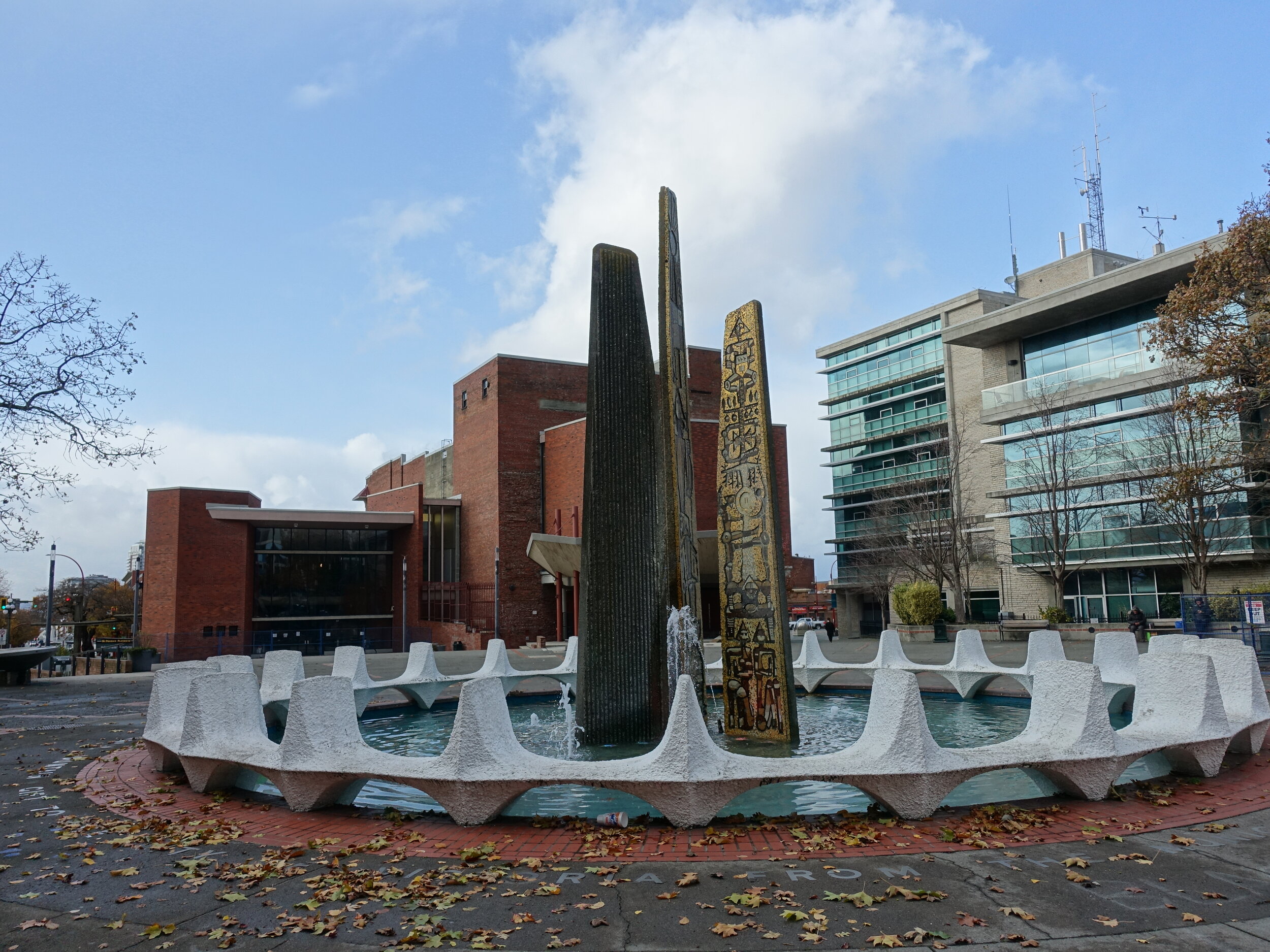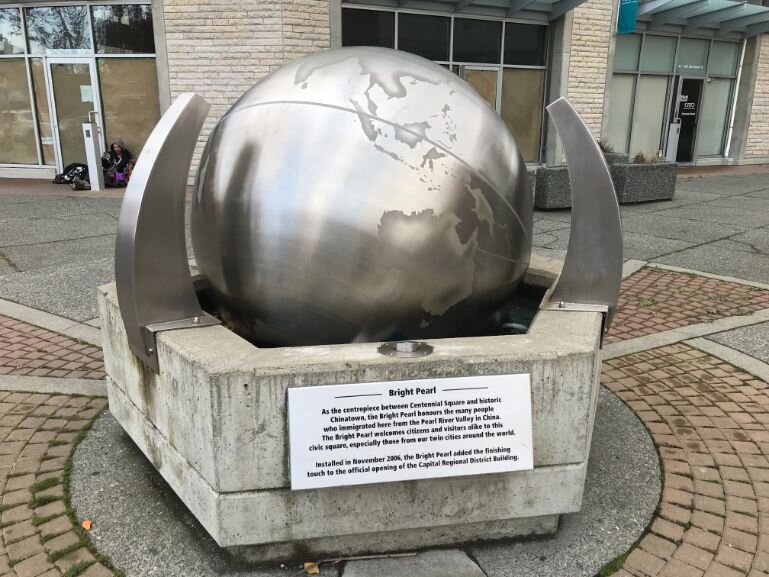Victoria’s Funky, Fun Narrow Alleys / Passages
Victoria, B.C. is famous not only for being Canada’s most British-like city (think Murchies Tea, or High Tea at the Empress), but also for having the country’s oldest Chinatown. And, one of Chinatown’s most famous tourist attractions is Fan Tan Alley - the narrowest street in North America at 4 feet wide. It is so “famous” it has been designated a National Historic site.
What was new to me is learning Fan Tan Alley is just one of several narrow mid-block passageways in downtown Victoria with secret shops, cafes and gardens.
FAN TAN ALLEY
Fan Tan Alley was once a nefarious corridor where men came to quench their thirst for drink, gambling, drugs and sex. Today, the alley leads to quirky clothing shops, record stores and cozy art galleries, but it doesn’t take much imagination to see that these were once dark, windowless dens, thick with opium smoke and crowded with fan tan players. The arched lintels atop each doorway provide an evocative old-world flourish. At night, the red lights and lanterns hanging along the alley, remind you this was once the red light district. The walls loom over you with faded graffiti etched on the mortar speaks of long-ago customers, waiting to participate in the shadow economies of opium dealing, gambling and prostitution.
Today, Fan Tan Alley is surrounded by a mix of old Chinese restaurants and grocery stores and modern furniture and coffee shops, making it a fun place to explore.
Link: Fan Tan Alley History

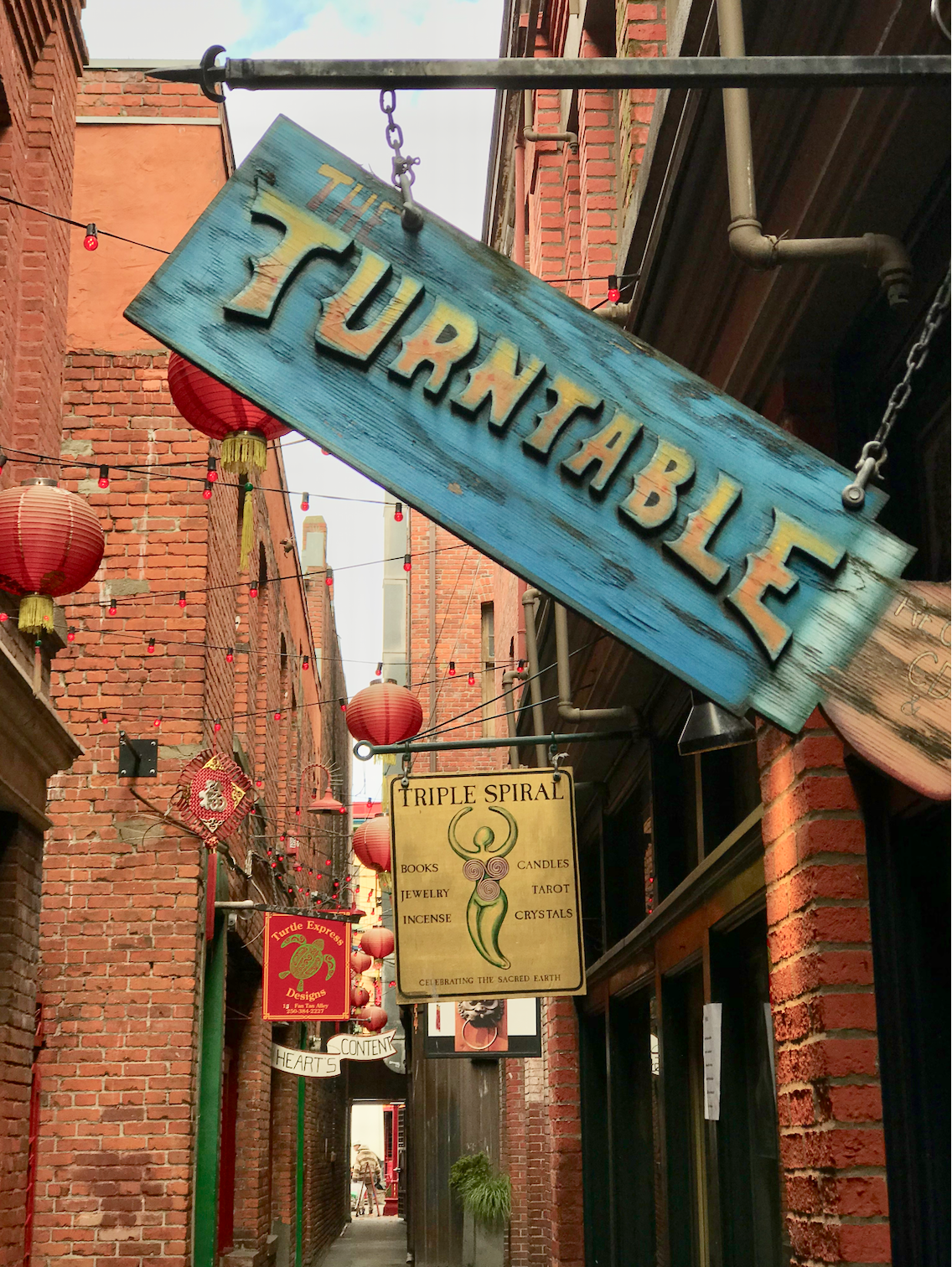
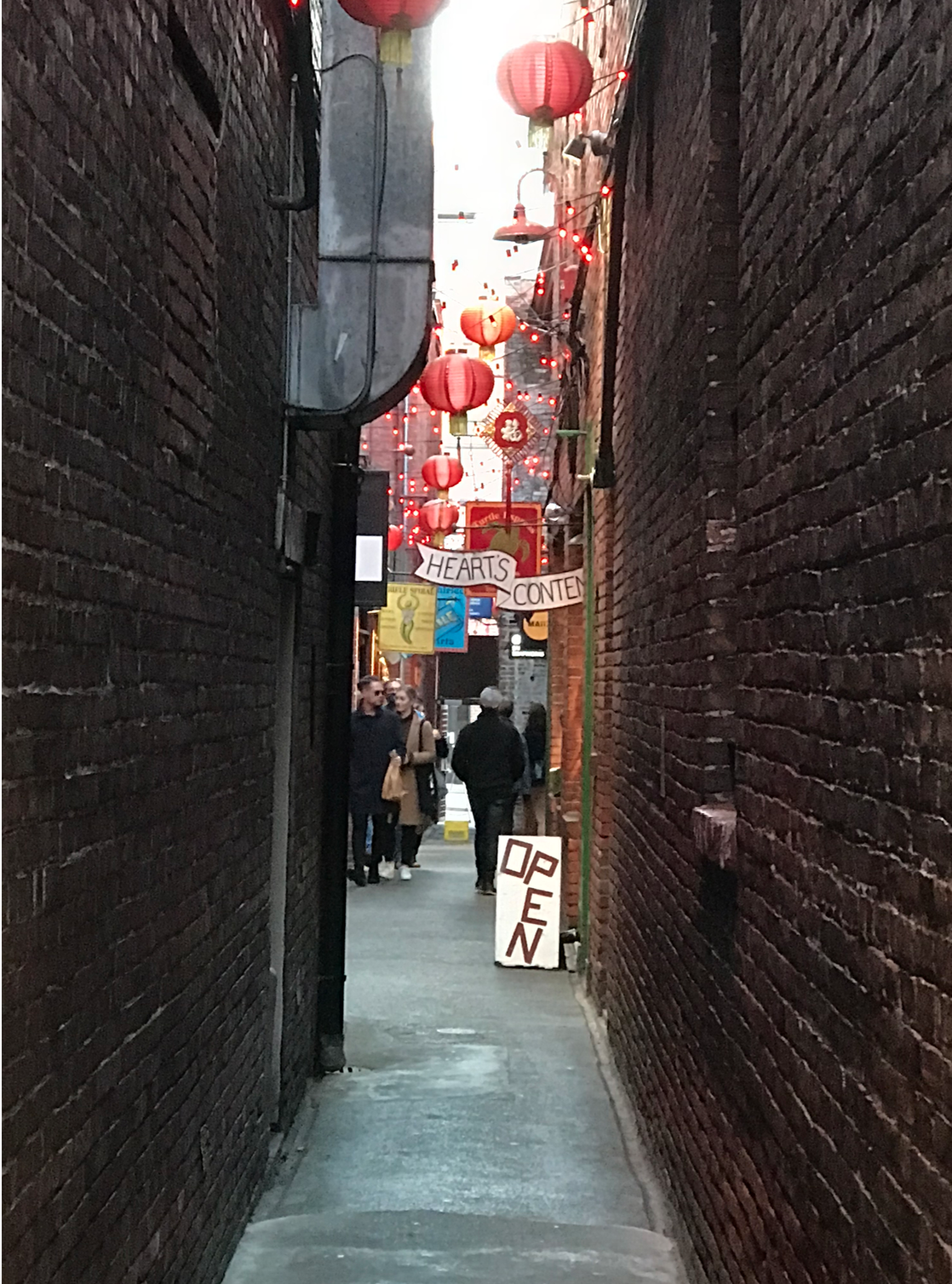
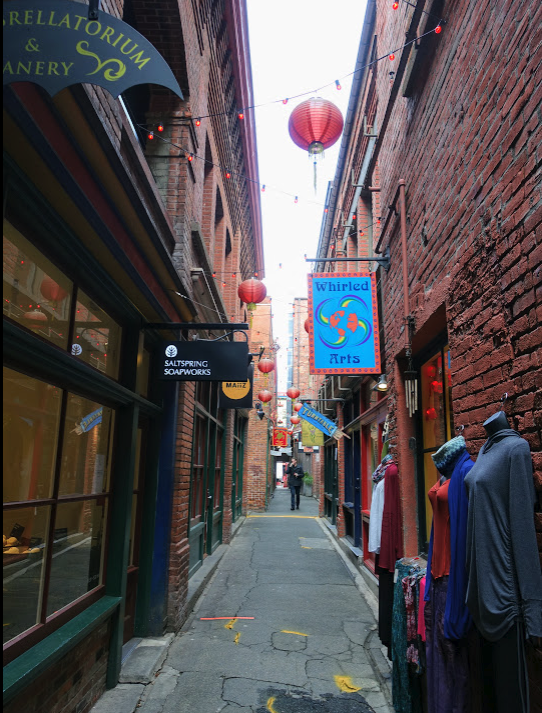
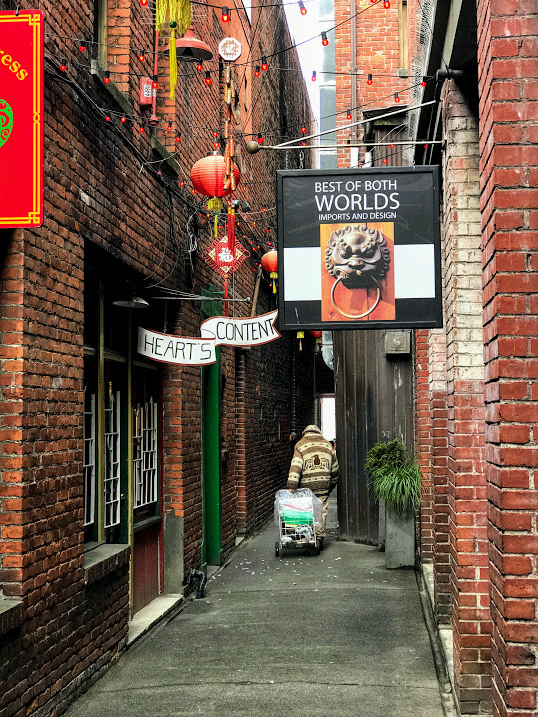


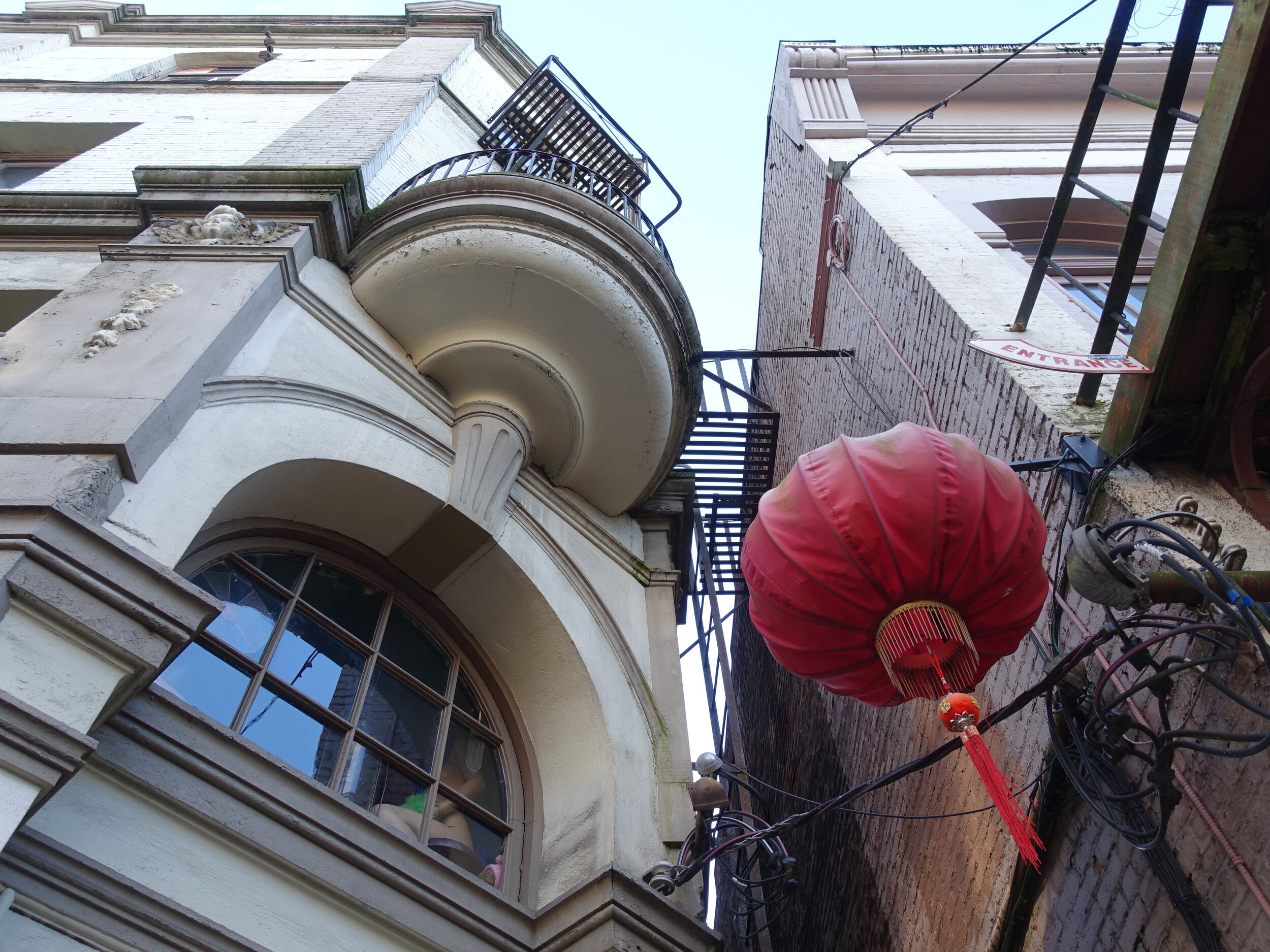

DRAGON ALLEY
Dragon Alley connects Fisgard and Herald Streets between Store St and Government Streets. Originally, there were two passageways through buildings Michael Hart constructed in 1890
Today, they have been reworked into maze of small businesses and studios with lovely garden patios.
In the late 1800s the Fisgard Building replaced a wooden hut once owned by the Society for the Propagation of the Gospel in Foreign Parts (I love the names of buildings in Chinatowns). The Herald Building was constructed as a stable and carriage repair shop.
In 1910, Quan Yuen Yen and Joe Gar Chow purchased both buildings, and in 1912 they built a three-section, two-storey lodging house intersected by a north-south passageway that connected to the two walkways through the Hart buildings.
This route through the three buildings is now known as Dragon Alley.
In 2000-2001, Moore Paterson Architects of Victoria won architectural and heritage awards for their conversion of the derelict central Quan Yuen Yen building into updated live-work townhouses.
Travel Tip: If you want to enjoy the coming and goings of people in Dragon Alley, Union Pacific Coffee Shop has a lovely patio in the alley and Tuesdays are $2 lattes. They also make great scones.
Link: Fisgard Street History
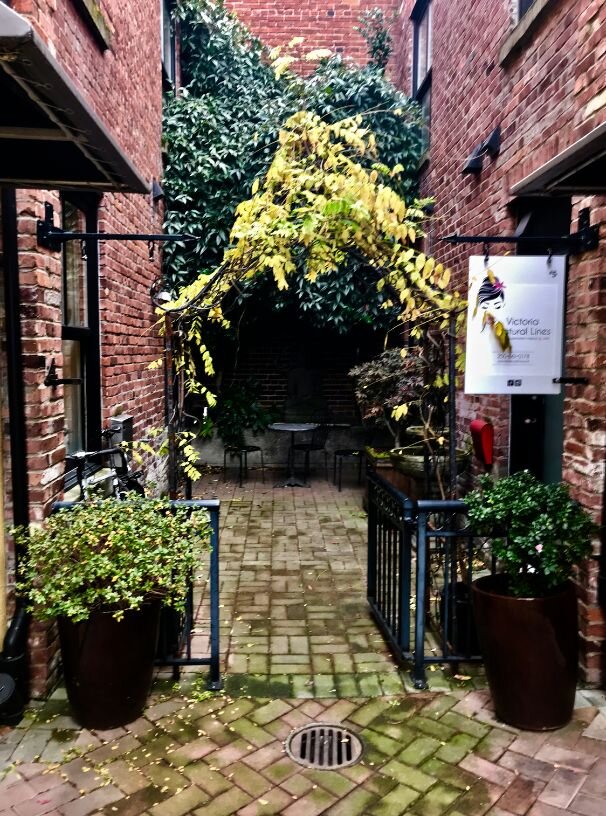
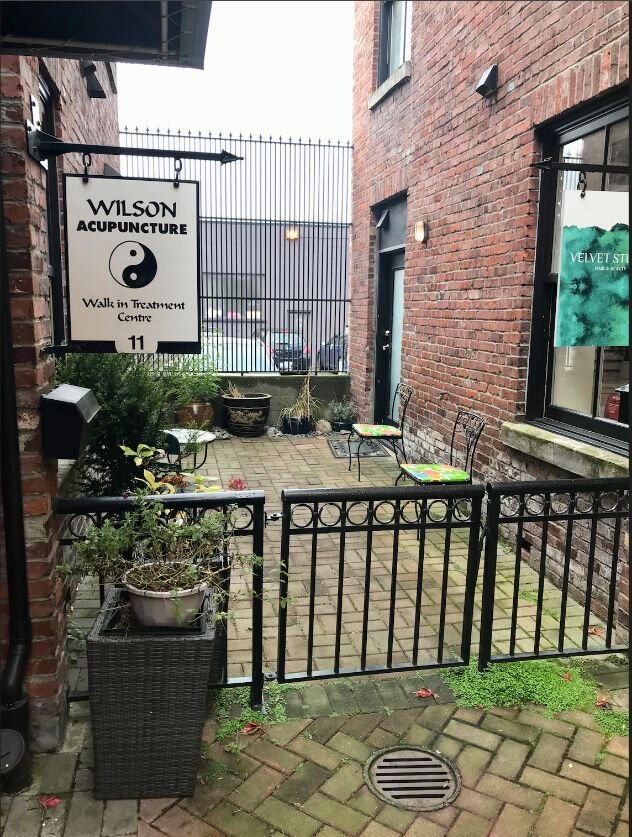
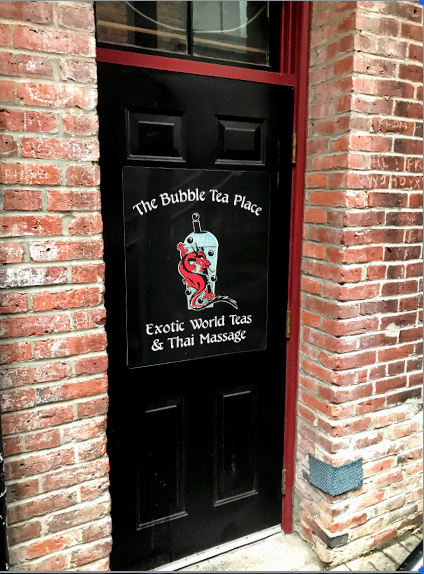

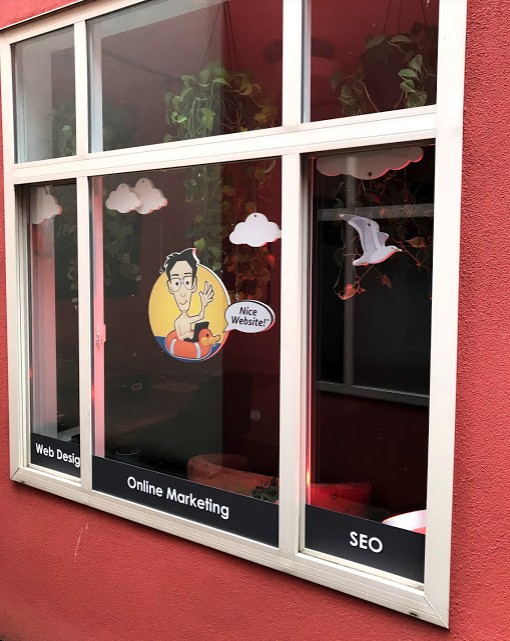
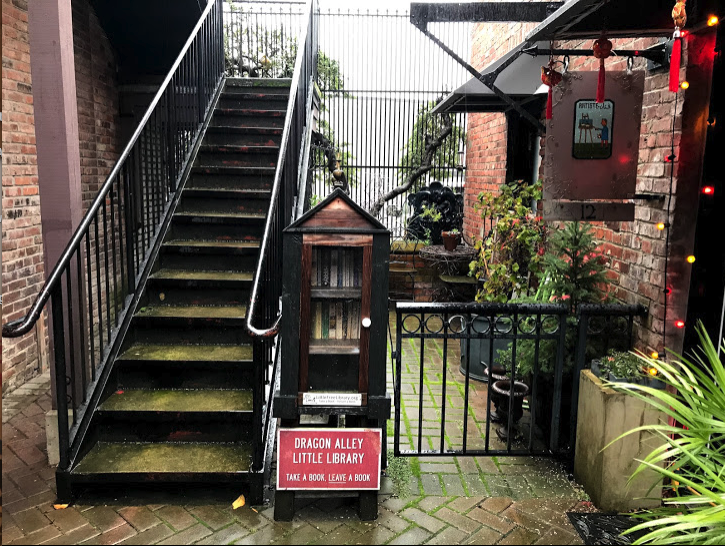
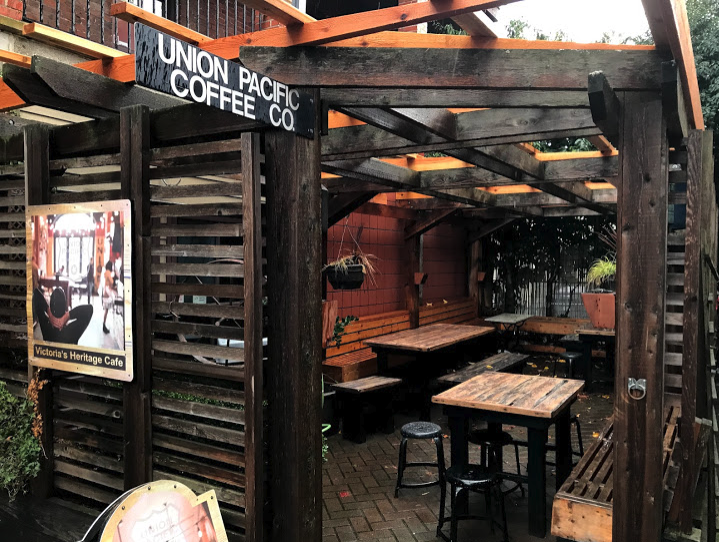
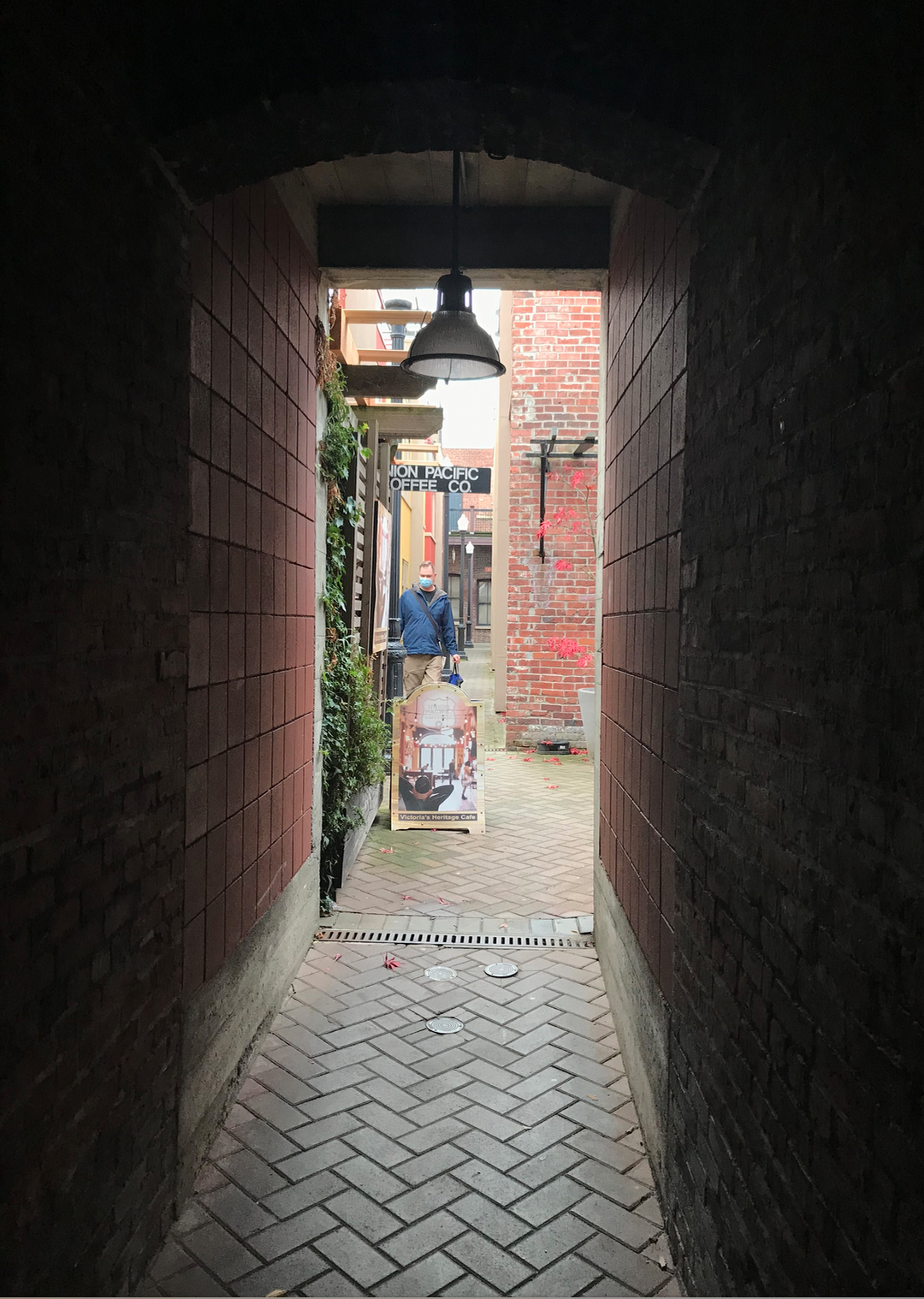

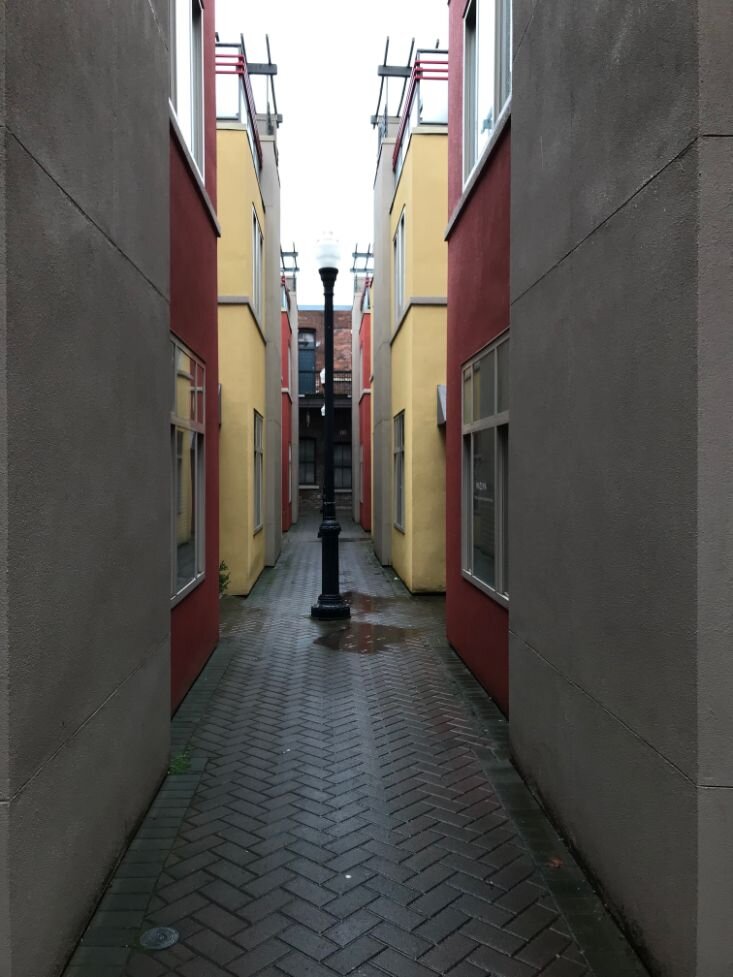

THEATRE ALLEY
In Cantonese, this passageway is called Hay Yuan Hong, but most people use the English translation – Theatre Alley. The name refers to a large brick theatre built in 1885 that stood in the middle of the block. Cantonese operas, acrobatic performances, religious services and political events took place there until it closed in 1935. The building was then used as a workshop and a warehouse, while most of the surrounding buildings were demolished. When the theatre was demolished in the mid-1980s, the alley disappeared.
Theatre Alley followed the western side of the Finlayson Building from Cormorant Street (today’s Pandora Avenue) north into the centre of the block where Victoria’s fifth Chinese Theatre was built in 1885, between Cormorant and Fisgard Streets.
The theatre was a tall building with two storeys, with Theatre Alley providing accessed the east side of the building, with a stairway to dressing rooms on the upper level. The theatre had deteriorated by the 1920s and was converted into an autobody shop in the 1930s. In the 1970s the Buckerfield family sold market garden supplies from this space, until 1987 the building was demolished to create a parking lot.
A new condo complex consisting of two residential buildings was erected on the site in 2017 - one facing Pandora and one facing Fisgard with a parkade in the middle. To recognize the history of the site, Theatre Alley was recreated, but unfortunately without any shops or cafes, thus making it much less inviting.
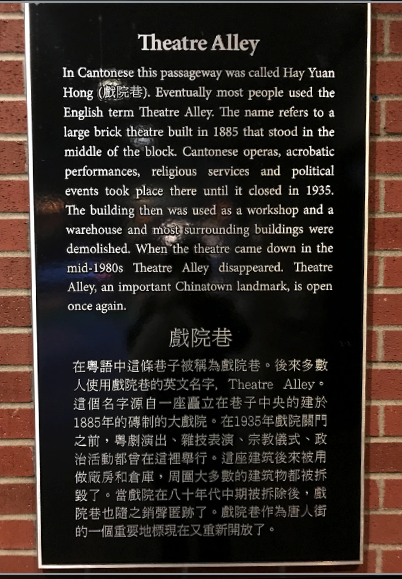
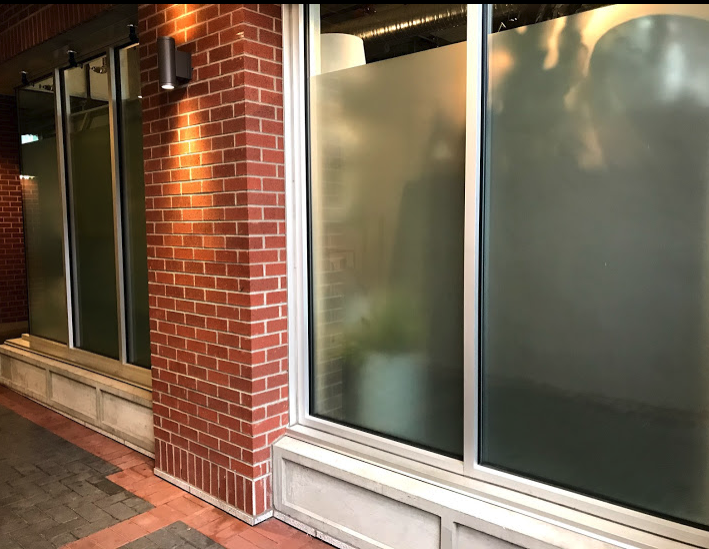
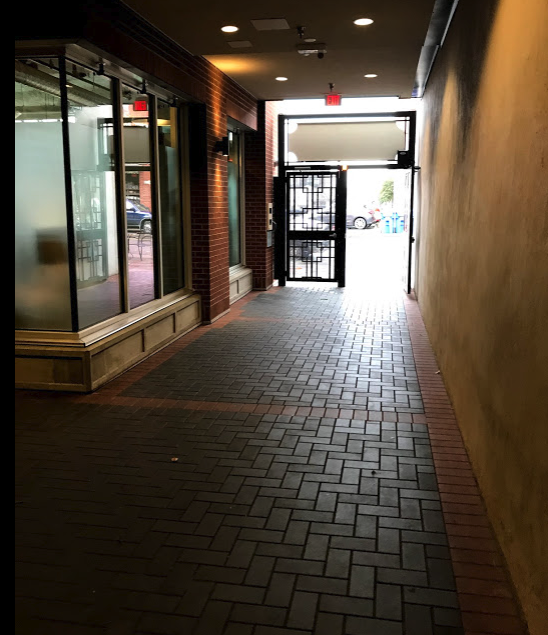
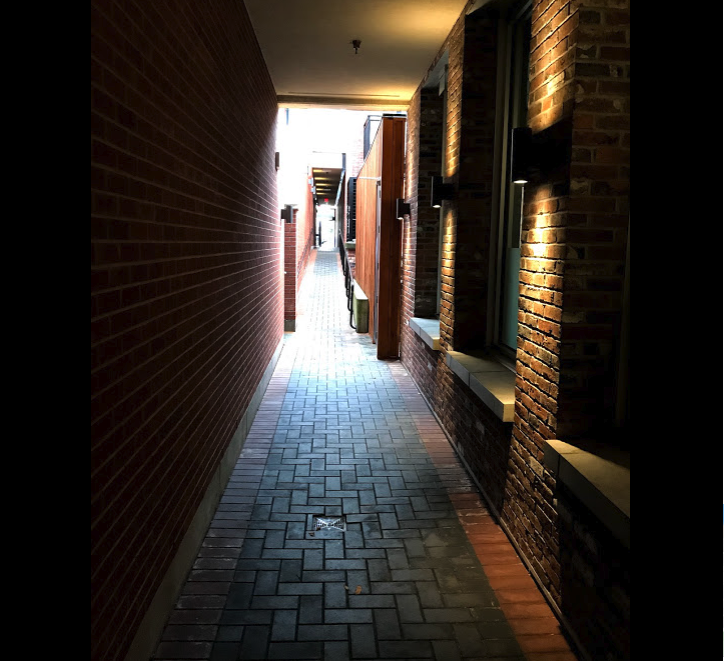
WADDINGTON ALLEY
Built by pioneer Alfred Waddington, this alley was intended to maximize access to and use of three privately-owned lots during the Fraser River gold rush of 1858. Initially, a number of cheap shops were erected which by 1863, included a fish market, bakery, blacksmith, bowling saloon (yes saloon not alley), the Sacramento Restaurant and the Pioneer Wholesale and Retail Variety Store.
Waddington retained ownership of the alley until his death by smallpox in 1872.
You have to look closely to realize that the alley is paved with wood blocks.
Both before and after his death, the paving of the alley was of public concern.
In 1866, dangerous potholes covered with iron plates were evident and by 1878 the alley was in sad shape. Finally, in 1908, the alley was paved with creosote-soaked Douglas Fir planks, along with a sidewalk incorporating a metal carriage curb – all at a total cost of $1,000.
In 1992, the alley was restored by the City of Victoria with the assistance of the Victoria Hoo Hoo Club, the Cowichan Valley Hoo Hoo Club and the British Columbia Heritage Trust.
Today, it is home to Il Terrazzo, one of the city’s top restaurants, as well as a busy Salvation Army Thrift store.
Link: History of Concatenated Order of Hoo-Hoo
One could easily pass the alley mistaking it only for a shortcut between Yates and Johnson Streets, they would be missing out on one of the closest experiences to reliving the streets of Victoria at the turn of the century.
FYI: While walking along the alley one day, we saw three men replacing some of the Douglas Fir planks. We started chatting with them, even got to hold one of the planks. There are heavy and feel much like a regular brick. They seemed proud of their work and noted that it is harder and harder to find people willing to do this “painstaking, on your knees” kind of work.
TROUNCE ALLEY
In 2015, Liza Weisstuch in The New York Times referred to Trounce Alley as a “tiny Euro-chic pedestrian passage connecting two busy downtown thoroughfares, which has emerged as a diverse micro hub where Old World businesses coexist alongside hip new shops and restaurants.”
This alley, named after pioneer Thomas Trounce, is noted for its authentic, now 125+ year old gaslights.
Trounce was the architect, builder and owner of the buildings along the alley. Trounce Alley connects Government Street with Broad Street, between View and Yates Streets. Today it is full of upscale boutiques and a contemporary art gallery.

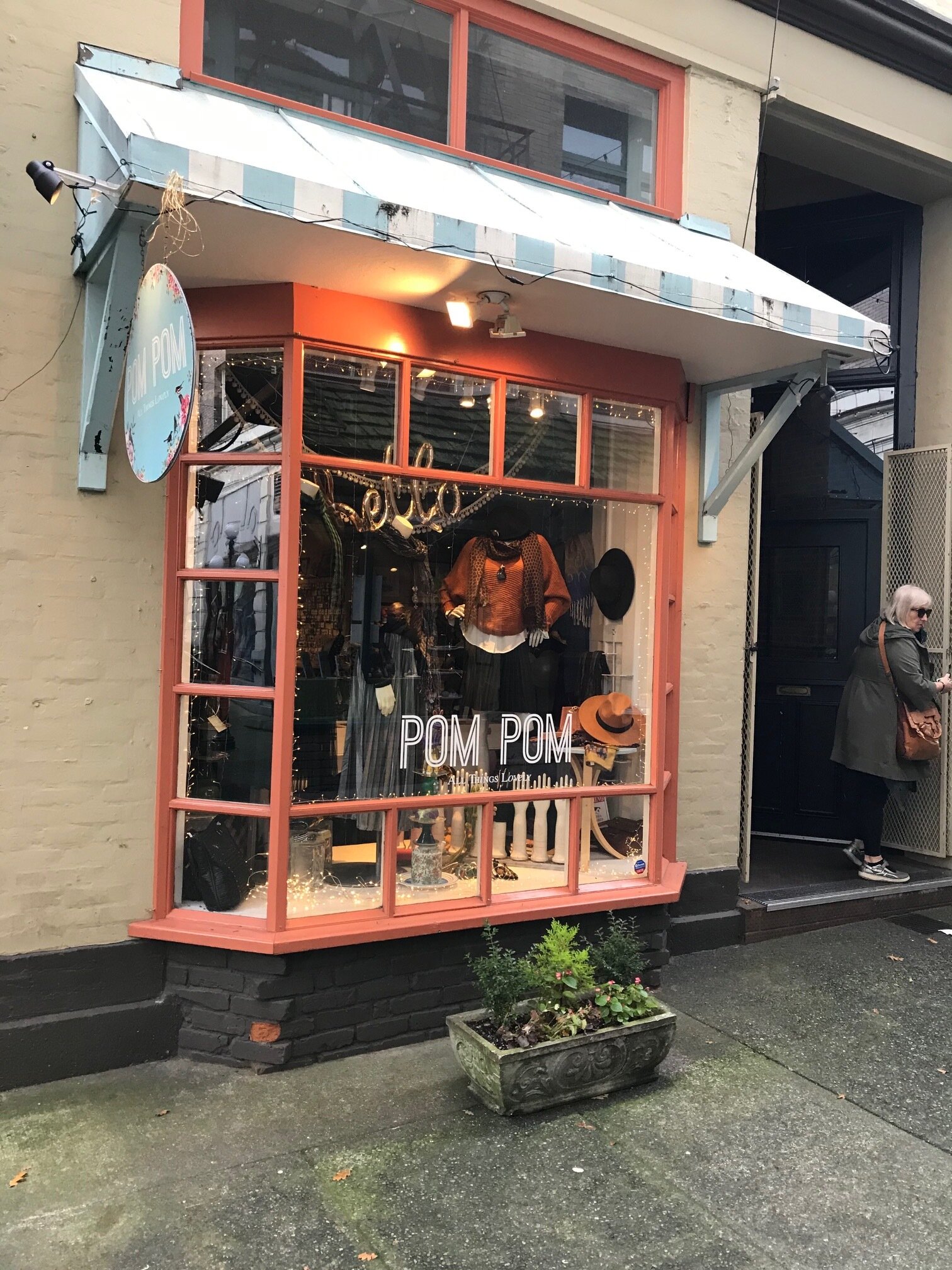


LEE MONG WAY
This walkway which connects Fisgard Street to Centennial Square, was named after Lee Mong Kow, a Chinese immigrant who arrived in Canada around 1880. He was an important link between the Chinese community and Canadian society because he became a skilled interpreter who worked for the Department of Customs for over 30 years. In 1899, Lee Mong Kow helped found the first free Chinese-language elementary school in Canada. He also played a leadership role in the Chinese Public School (established in 1909 as the Chinese Imperial School), serving as an honorary principal for eleven years.
COMMERCIAL ALLEY
You could easily miss this alley as it doesn’t have the fancy blade sign, or the funky shops. It looks very much like a typical loading dock alley. Commercial Alley runs between lower Yates Street and Bastion Square.
The west-facing brick wall of the Youth Empowerment Society is the new site chosen to be developed to present public art. The alley is an access lane to the Victoria Youth Empowerment Society, Renaissance Book Store, The Reef Caribbean Restaurant, and Lucky Bar, with pedestrian access to Bastion Square.
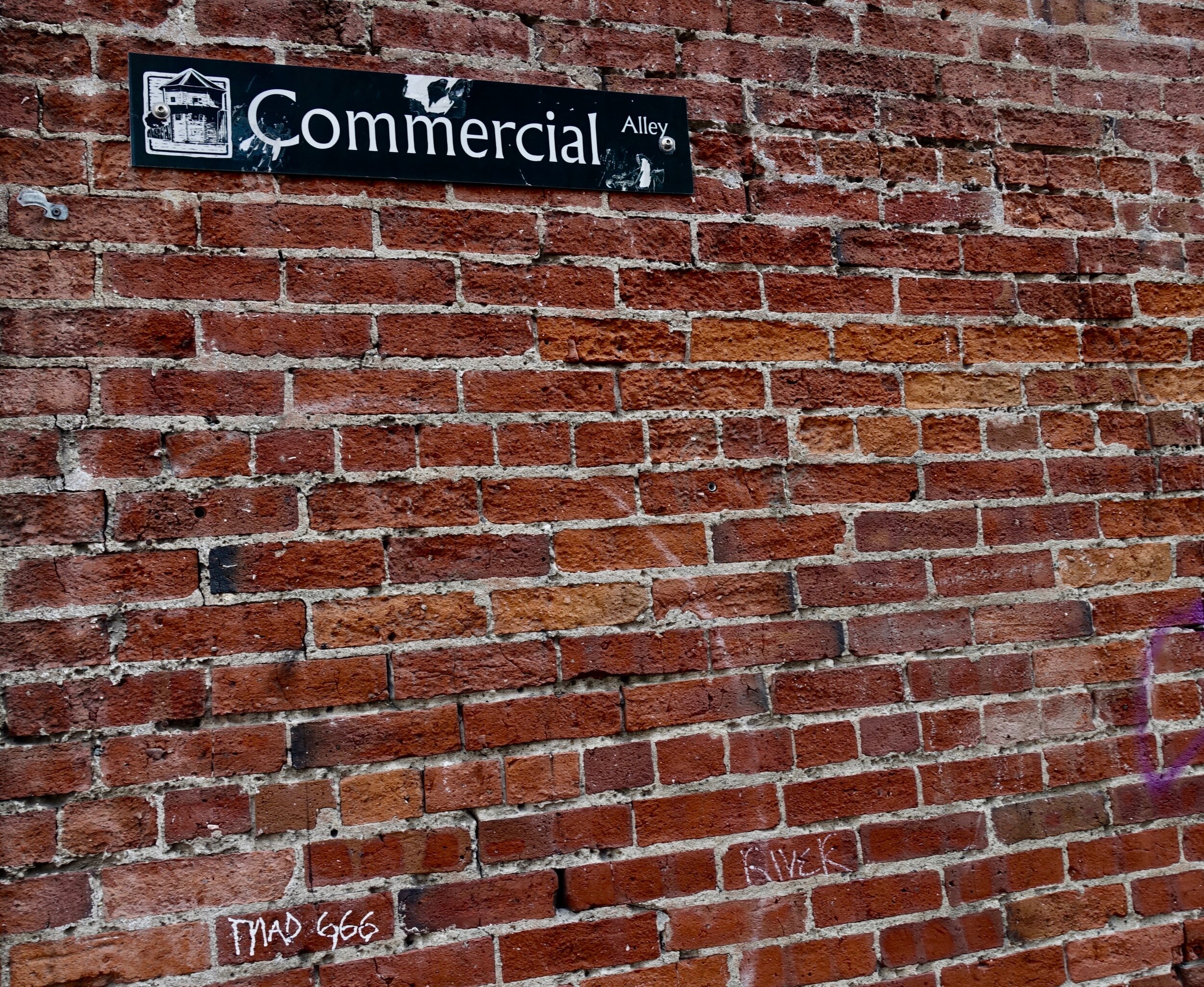
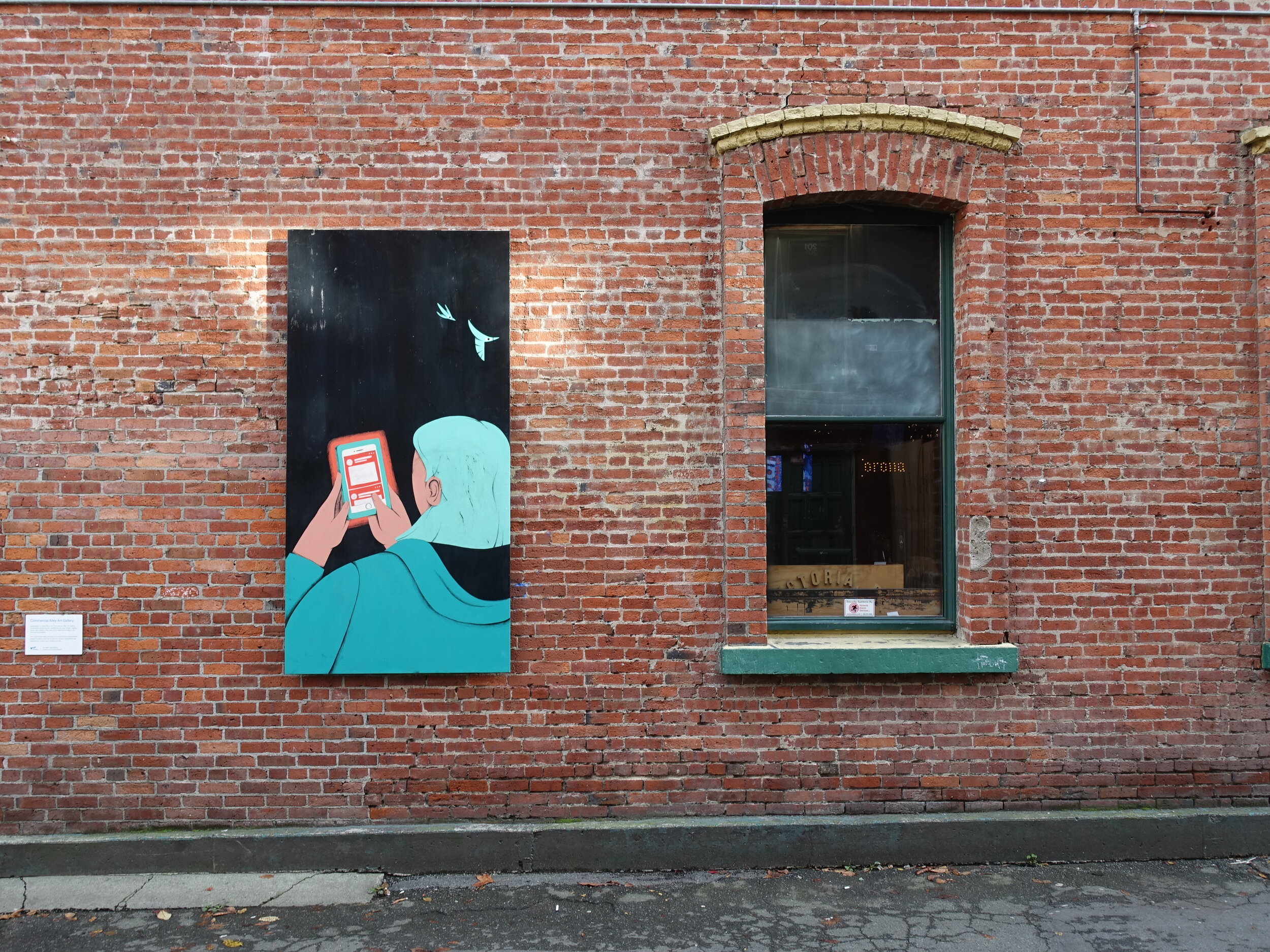

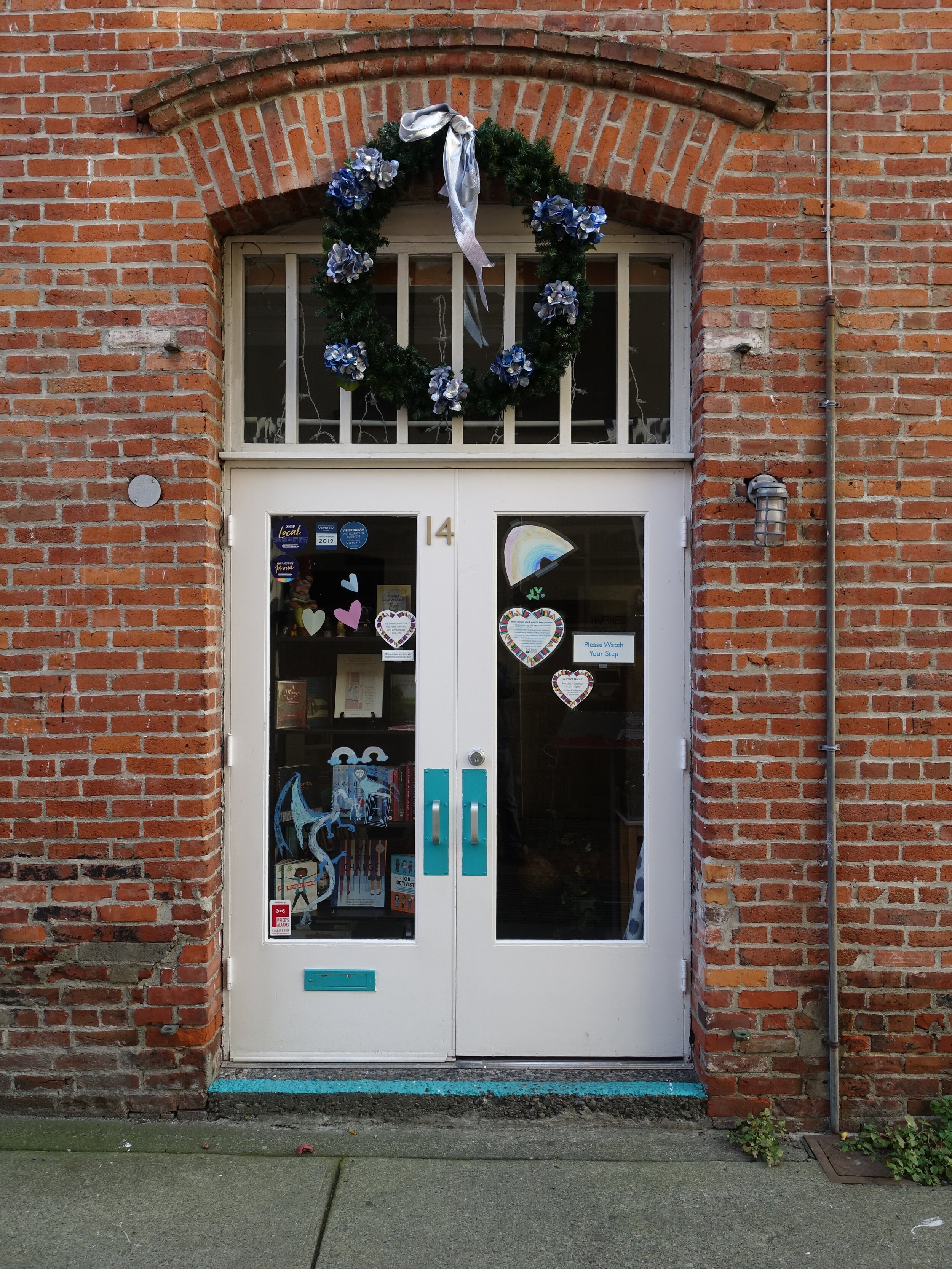
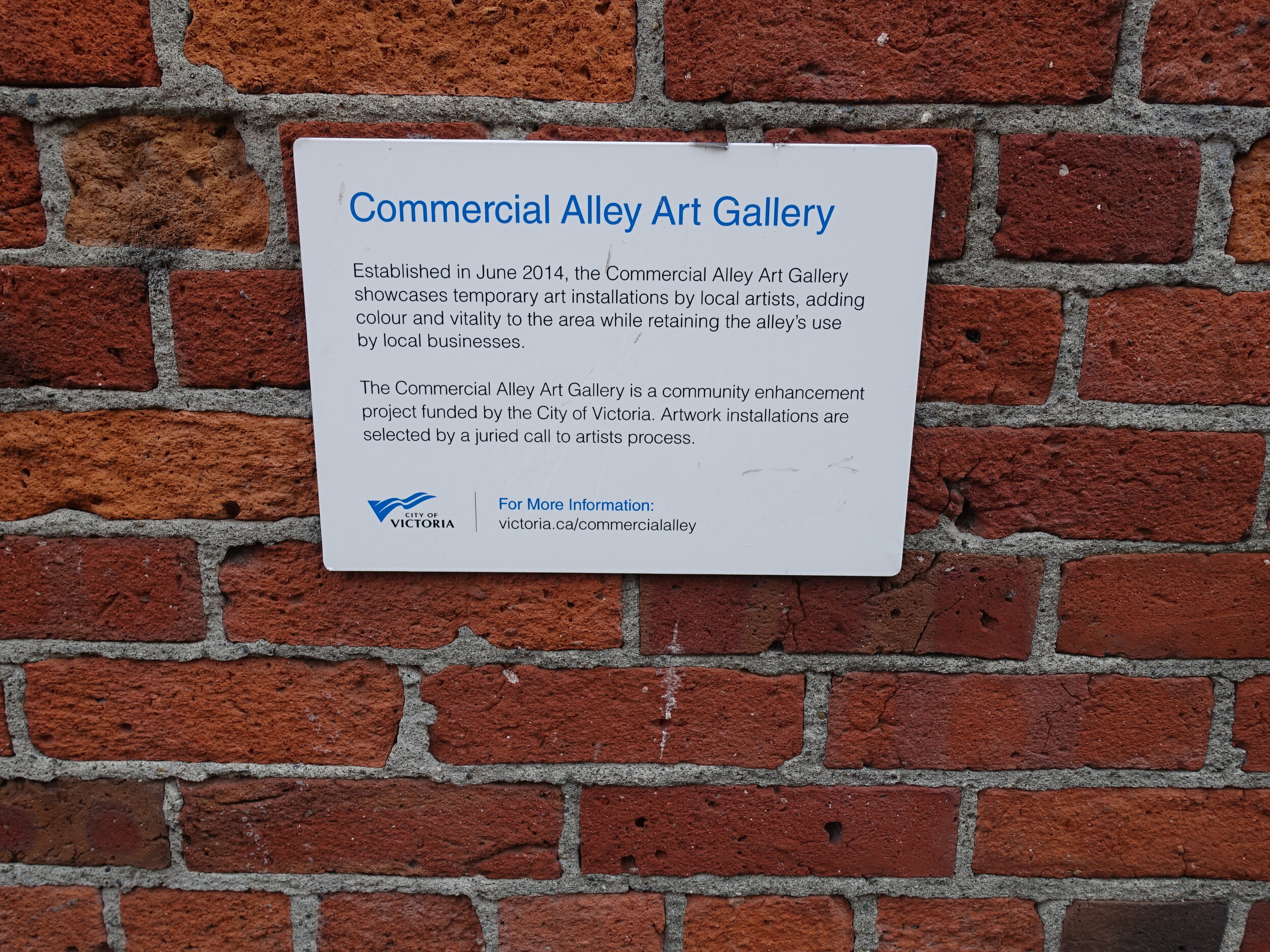

LAST WORD
Victoria’s alleys reminded me of Leipzig, Germany’s historic arcades that are also tourist attractions and home to upscale designer shops, bookshops, small specialty shops, restaurants and cafés.
They also remind me of Calgary’s indoor elevated +15 system, that connects buildings at mid-block and are full of small shops, cafes, food courts, public art and seating areas. Calgary should embrace its +15 system - with a little imagination and marketing, it could become a unique tourist attraction.
If you are in Victoria, be sure to give yourself an hour or so to explore its historic downtown alleys, there are all close to each other.
If you like this blog, you might be interested these links:
Alley art blossoms in the neighbourhood of Sunnyside


